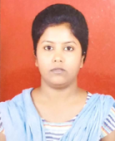REVIEW ON CERVICAL SPONDYLOSIS AND IT`S MANAGEMENT THROUGH PANCHAKARMA
Keywords:
Spondylosis, Panchkarma, Basti, Nasya, Shodhana, Stambha.Abstract
Cervical Spondylosis, osteoarthritis of the cervical spine produces neck pain, radiating to the shoulders or arms with headache (posterior occipital region). At present time it is a common problem, degeneration of cervical vertebrae is mostly seen in elderly people but it`s prevalence is increasing in early or middle age also, due to occupational overstress on neck region, traumatic blunt or sharp injury, improper sitting posture, excessive smoking, sedentary lifestyle, false diet pattern and genetic factors. About 50% of people over the age of 50 and 75% of people over the age of 65 have typical radiographic changes of cervical spondylosis. In Ayurvedic context the disease cannot be correlated exactly as whole with any single disease or condition, but some features can be correlated nowadays with various conditions described in Ayurveda such as “Manyastambha”, “Greeva sandhigata vata”, and Greeva Stambha (all are Vatavyadhi) in our classical text. In this review the cervical spondylosis and its management has been explain closely to “Greeva sandhigata vata”. Ruka and Stambha (pain and stiffness) are the signs and symptoms told in our texts. The modern management, such as NSAID`s, muscle relaxants, corticosteroids and even operative procedures are not fulfilling the patients goal of healthy life as all the medicines only give symptomatic relief. Through Ayurveda especially Panchakarma, probable management that can be done are Abhyanga, Rukshaswedana, Patra pinda swedana, Greeva basti, Mridu shodhana, Basti, Nasya Karma etc. can help in the successful management.
Downloads

Downloads
Published
Issue
Section
License

This work is licensed under a Creative Commons Attribution-NonCommercial-ShareAlike 4.0 International License.


